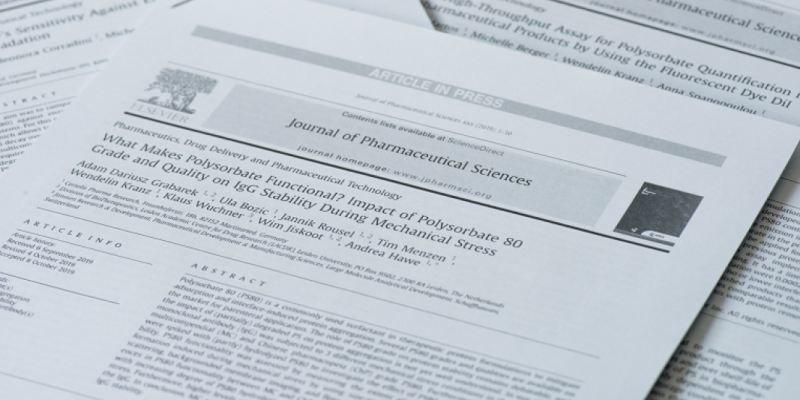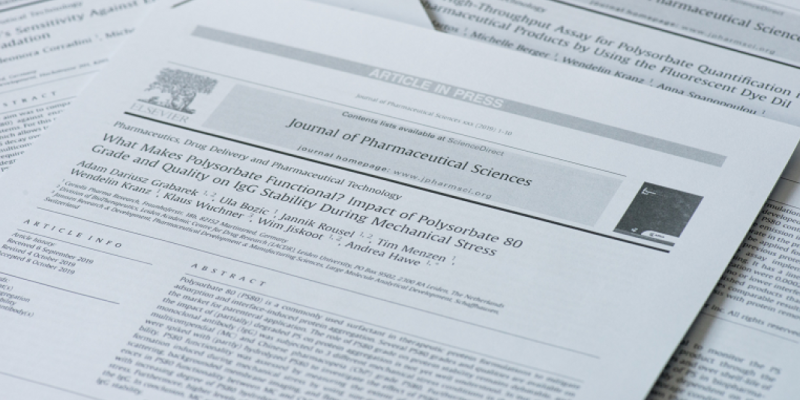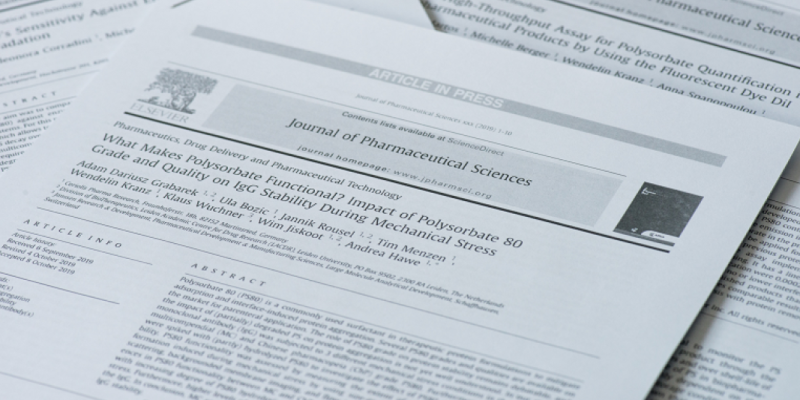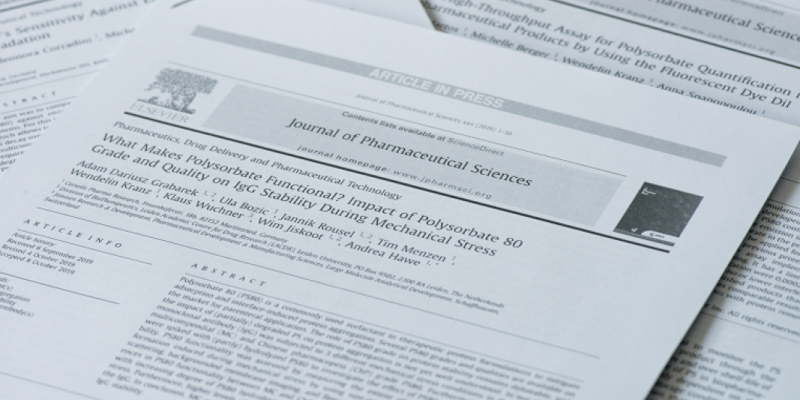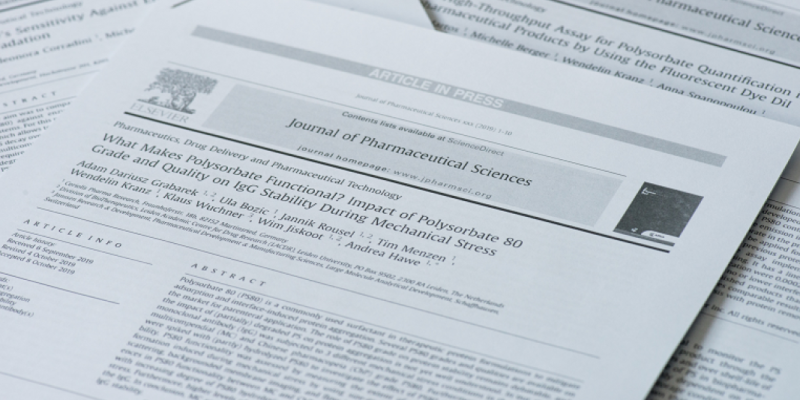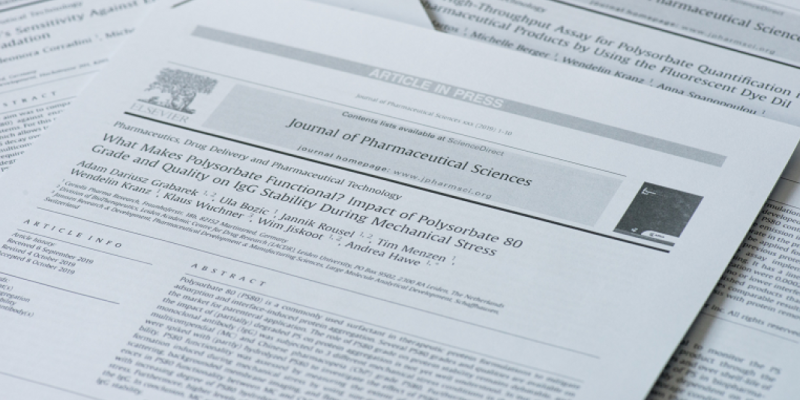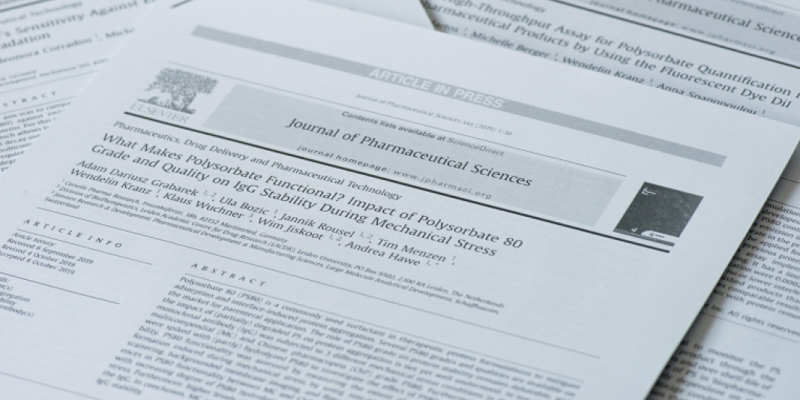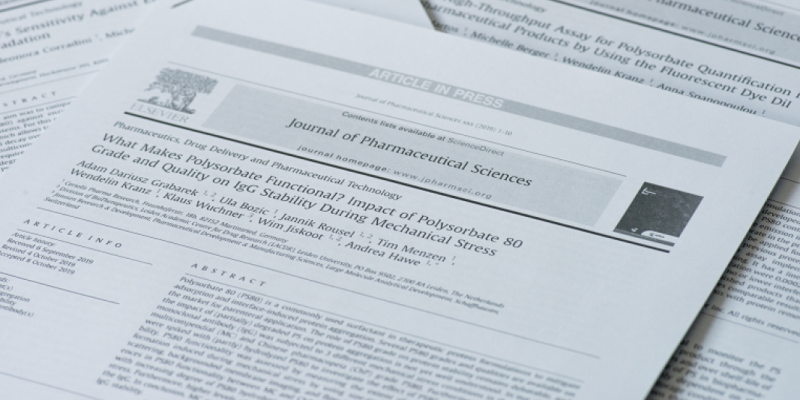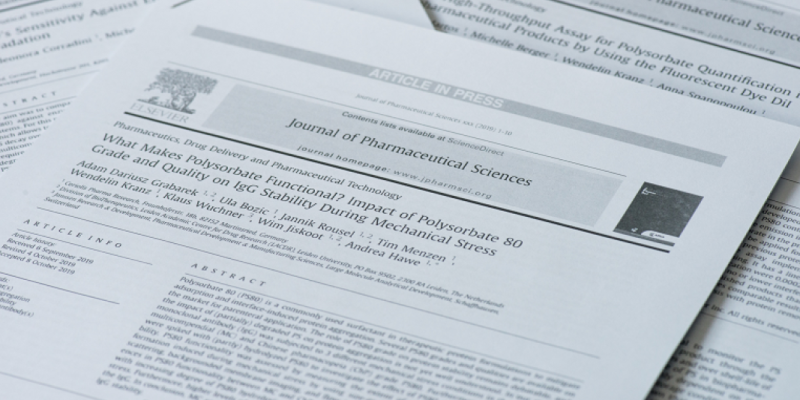Comparison of Submicron Particle Counting Methods with a Heat Stressed Monoclonal Antibody
J Pharm Sci. 2022 Jan.
Comparison of Submicron Particle Counting Methods with a Heat Stressed Monoclonal Antibody:
Effect of Electrolytes and Implications on Sample Preparation
Within this study, the performance and limitations of tunable resistive pulse sensing (TRPS) was evaluated to characterize submicron particles in unstressed and heat stressed monoclonal antibody (mAb) solutions. These were compared with microfluidic resistive pulse sensing (MRPS), resonant mass measurement (RMM), and nanoparticle tracking analysis (NTA). For TRPS and MRPS measurements, an adjustment of ionic strength was required to achieve suitable measurement conditions. The addition of electrolytes is potentially critical for protein formulations and therefore the effect of salt concentration and pH on submicron particle levels was further investigated.
Heat stress caused a sharp increase in particle levels between 250-900 nm, observable by all four techniques. Due to reduced colloidal stability, indicated by increased attractive forces and reduced aggregation onset temperatures in the presence of sodium chloride, protein aggregation was observed in heat stressed mAb only after the addition of sodium chloride. Achieving adequate ionic strength by replacing sodium chloride with other electrolytes similarly resulted in reduced colloidal stability and protein aggregation. It is recommended that protein samples prone for aggregation in the presence of high ionic strength should not be analyzed by RPS measurements after the addition of electrolytes. However, protein samples containing already required ionic strength can be analyzed by any of the four techniques.
Keywords
Biopharmaceutical characterization, Formulation, Monoclonal antibody(s), Particle size, Protein(s), Protein aggregation, Submicron particle characterization
J Pharm Sci. 2022 Jan.


